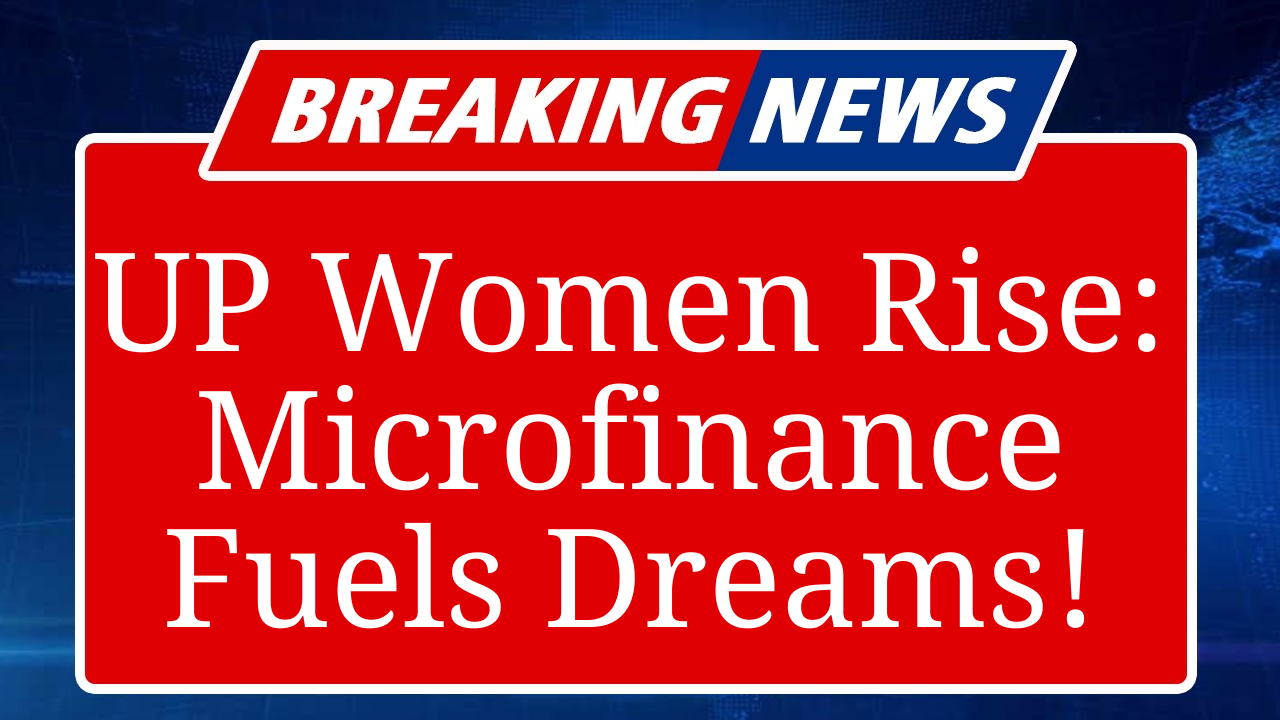Microfinance in Uttar Pradesh is transforming women’s lives by providing collateral-free loans, fostering entrepreneurship, and promoting financial inclusion. Over 60 million women in India benefit from such schemes, with UP leading in SHG-led initiatives. These programs offer financial literacy, low-interest loans, and community support, enabling women to start businesses and achieve economic independence, significantly impacting rural economies.
Microfinance Drives Women’s Empowerment in Uttar Pradesh
In Uttar Pradesh, microfinance has emerged as a powerful tool for empowering women, particularly in rural areas, where access to traditional banking remains limited. According to the Microfinance Institutions Network (MFIN), over 60 million Indian women hold small, collateral-free loans, with Uttar Pradesh being a key hub for such initiatives. The state’s focus on Self-Help Groups (SHGs) and Joint Liability Groups (JLGs) has enabled women to access financial services, fostering entrepreneurship and financial independence.
The Reserve Bank of India (RBI) defines microfinance loans as collateral-free credit provided to households with an annual income of up to ₹3 lakh. In UP, these loans, often ranging from ₹10,000 to ₹60,000, are disbursed through microfinance institutions (MFIs) like Chaitanya India and Spandana Sphoorty Financial Ltd. These institutions offer flexible repayment options—daily, weekly, or monthly—at nominal interest rates compared to traditional banks. For instance, a 2024 report by the International Finance Corporation (IFC) highlights that women in UP, who constitute 85% of MFI clients, have used these loans to start small businesses, such as dairy farming, tailoring, and retail shops, boosting family incomes and local economies.
SHGs, typically comprising 10–20 women, play a pivotal role in UP’s microfinance ecosystem. Supported by the National Bank for Agriculture and Rural Development (NABARD), these groups pool savings and access credit through the SHG-Bank Linkage Programme. As of 2025, UP hosts over 2.5 million SHGs, impacting nearly 30 million families. These groups not only provide financial support but also foster leadership and financial literacy. For example, women in SHGs learn to manage finances, negotiate loan terms, and engage with banks, skills that enhance their decision-making capabilities at home and in their communities.
A notable success story is that of Chandrawati Rajpoot from Narela, Madhya Pradesh, who, with a ₹30,000 microloan, transitioned from a farm laborer to owning a dairy herd and a children’s clothing shop. Her monthly income has nearly tripled, allowing her to repay her ₹1,660 monthly installment comfortably while supporting her family’s needs. Similar stories abound in UP, where women like Mithilesh Yadav have used microloans to establish grocery and tailoring businesses, achieving financial stability.
Government initiatives like the Pradhan Mantri MUDRA Yojana and Mahila Kisan Sashaktikaran Pariyojana (MKSP) further bolster these efforts. MUDRA loans, offering up to ₹10 lakh without collateral, have supported women entrepreneurs in UP, with lower interest rates for female borrowers. The MKSP, focused on women farmers, provides technical training and financial support, enabling them to adopt sustainable agricultural practices. In 2024, the Ministry of Rural Development reported that these schemes have reached over 1.5 million women in UP, enhancing their productivity and income.
However, challenges persist. Limited financial literacy, with over 80% of women in rural UP classified as financially illiterate by the National Centre for Financial Education, hinders effective loan utilization. Additionally, risks of over-indebtedness and high operational costs for MFIs in remote areas remain concerns. To address these, MFIs like Chaitanya India offer non-financial services, such as literacy and business training programs, to equip women with essential skills.
The impact of microfinance extends beyond economics. SHGs foster social networks, boosting women’s confidence and leadership qualities. With 88% of India’s 12 million SHGs being women-led, UP’s women are increasingly taking charge of community decisions, breaking gender norms. The state’s microfinance model, blending financial aid with community support, is setting a benchmark for inclusive growth, transforming lives one loan at a time.
Disclaimer: This article is based on recent reports, government data, and insights from microfinance institutions. Information is sourced from the Reserve Bank of India, Microfinance Institutions Network, International Finance Corporation, and news outlets like The Borgen Project and Eco-Business. Data is accurate as of September 2025, but readers are advised to verify details with official sources for financial decisions.

